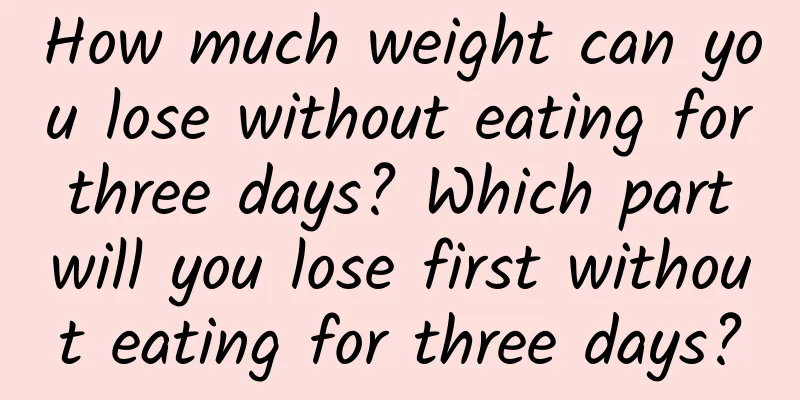What is the meaning of gi food?

|
When losing weight, you can always see the two letters GI, what are low-GI foods and high-GI foods, what do these GI foods mean? What is the definition of GI foods? What does GI food mean?GI stands for glycemic index. Foods are generally divided into low GI foods and high GI foods. Foods with GI>75 are high GI foods, and foods with GI≤55 are low GI foods. Definition of gi foodHigh GI foods are foods with a glycemic index of 70 or above. The GI here is actually the abbreviation of glycemic index (GI), also translated as glycemic index. It was first proposed by Canadian physician Jenkins in the American Journal of Clinical Nutrition in 1981 as an effective indicator for measuring the response of carbohydrates to blood sugar. It refers to the ratio of the area under the plasma glucose tolerance curve 2 hours after ingesting 50g of carbohydrate-containing food and 50g of glucose respectively. It reflects the speed and ability of a certain food to increase blood sugar compared with glucose. The smaller the GI of a food, the longer it stays in the gastrointestinal tract, the lower its absorption rate, the slower its glucose release, the lower its peak value after entering the blood, and the slower its decline rate, so the less it raises blood sugar. Foods with high GI are digested quickly and have high absorption rates after entering the gastrointestinal tract. They release glucose quickly and have high peak values after entering the blood, which means that blood sugar levels rise high. Therefore, the concept of GI can be used to guide the diet of diabetics and patients with digestive tract diseases. Diabetics can pay attention to choosing foods with low GI, while patients with digestive tract diseases can pay attention to choosing foods with high GI. What are low GI foods?Foods with a low GI include Whole grains, beans, milk, potatoes (raw or cold-processed), fruits with high fruit acid content (apples, cherries, kiwis, etc.), whole-wheat or high-fiber foods, mixed diet foods (dumplings, wontons, etc.) and fructose, etc. GI (Glycemic Index) refers to the ratio of the increase in blood sugar after eating food to the glucose consumed. The higher the GI, the faster the sugar is digested and absorbed. Foods with a GI below 55 are generally called low-GI foods. Generally, foods with a GI value below 40 are foods that diabetic patients can eat safely. When you eat high GI foods, your blood sugar will rise in a short period of time, and insulin will arouse the body's functions to convert the calories eaten into fat. Low GI foods are digested and absorbed relatively slowly, keeping blood sugar levels at a relatively stable state, so they can bring a longer sense of fullness. When there is no excess sugar left in the blood, people are less likely to gain weight. The GI value of soybeans is 20, and the GI value of soybeans is 30, which are healthy and nutritious low GI ingredients. What happens if you eat too much high-GI food?Too much high GI food will affect the body's ability to regulate blood sugar. GI theory holds that some high GI carbohydrate foods, such as sucrose and refined grains such as white rice, may cause a sudden increase in blood sugar levels and then a rapid decrease, destroying the body's ability to use insulin and process sugar. |
<<: Will high body fat cause fatty liver? What should I pay attention to when my body fat is high?
>>: Does high body fat make you sweat easily? What are the effects of high body fat?
Recommend
How to open Gangwondo liquid foundation How to apply Gangwondo liquid foundation
The popularity and reputation of Gangwon-do Liqui...
Will I get fat if I eat a big meal during weight loss? How to remedy eating a big meal during weight loss?
Many friends will control their diet and reduce e...
Is Maybelline owned by L'Oreal? What brand is Maybelline?
Maybelline can be considered an old brand. Is thi...
How can obese people lose fat? How can fitness beginners lose fat?
Losing weight should not only look at body weight...
What is the most fat-burning exercise method? What is the most fat-burning exercise method?
Burning fat quickly is what everyone wants to do ...
How to use toothpaste to remove blackheads How to remove blackheads the fastest and most effective way
Toothpaste is a personal cleaning product that we...
How long can the Gangwondo liquid foundation be used? How to choose the color number of the Gangwondo liquid foundation?
Gangwon-do Liquid Foundation is a liquid foundati...
What should I do if my face becomes bigger after chewing betel nut? Is it useful to get a betel nut face slimming injection?
Betel nut face is caused by long-term chewing of ...
Can eating deer placenta powder really remove chloasma? The efficacy and function of deer placenta powder
Deer placenta powder is made by grinding the fetu...
Can yoga pants be worn as long johns? Can fitness pants be worn as long johns?
Yoga pants are a kind of clothing worn when pract...
Is Zuzu face slimming cream effective? What is the price of Zuzu face slimming cream?
zuzu face-slimming cream is a very popular face-s...
What is the difference between hiking shoes and running shoes? Can hiking shoes be used for running?
Hiking shoes are specially designed for people wh...
Should I wear safety pants inside or stockings inside? Safety pants are best worn outside
It is very common for girls to wear safety pants,...
Which brand of setting spray is good? Can the long-lasting setting spray be sprayed on liquid foundation?
Setting spray is a makeup setting product that ma...
Can pregnant women use Arden Gold Glue? Can Arden Gold Glue regulate skin quality?
Arden Gold Gel is a very easy-to-use essential oi...









